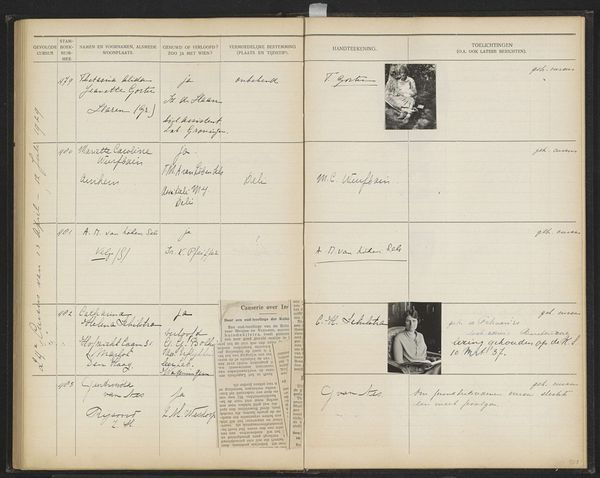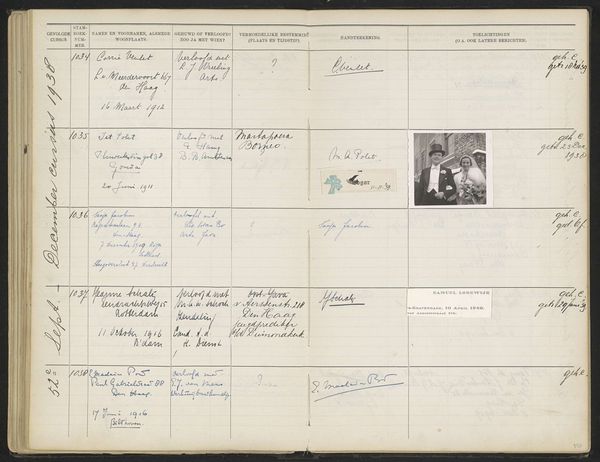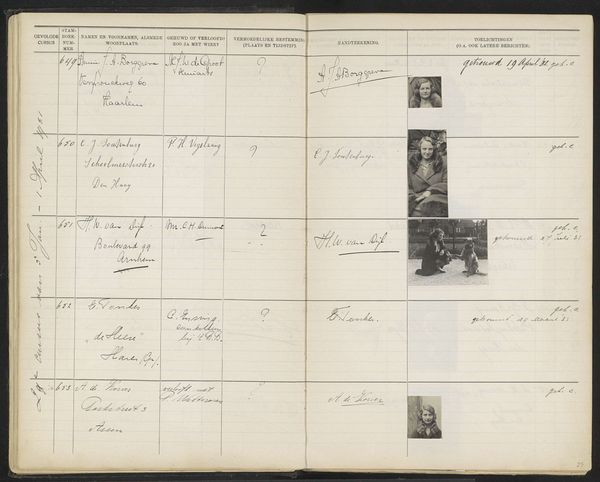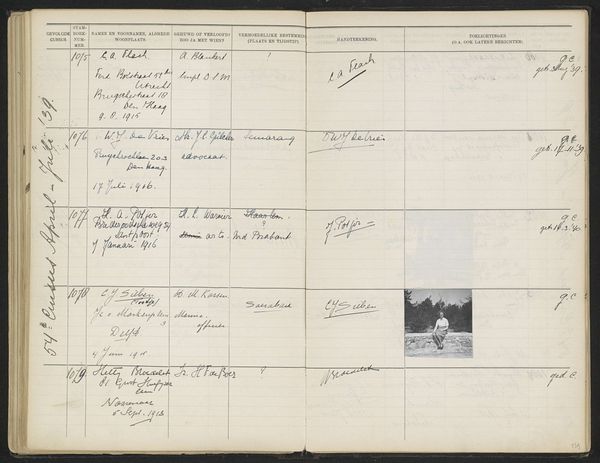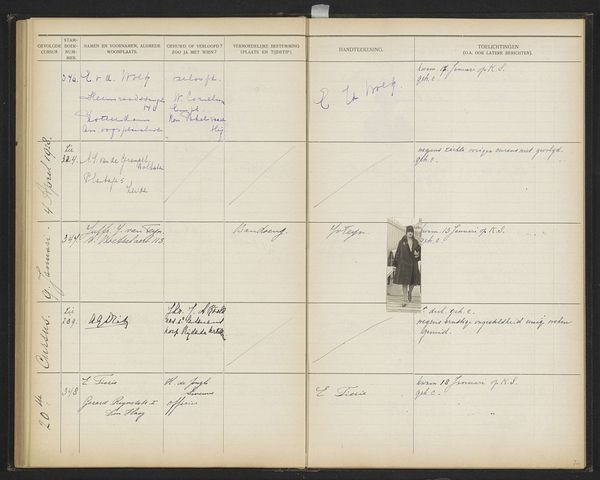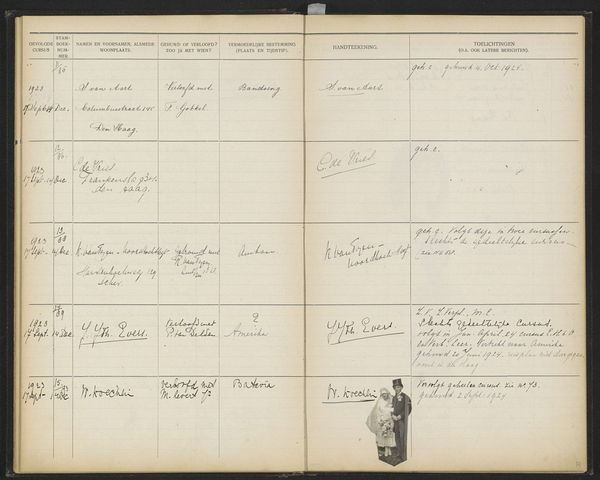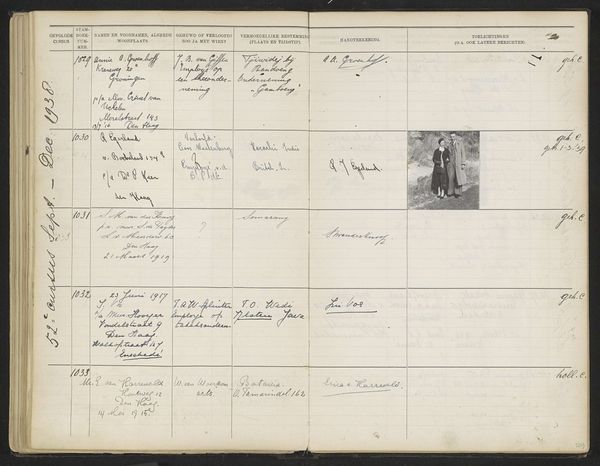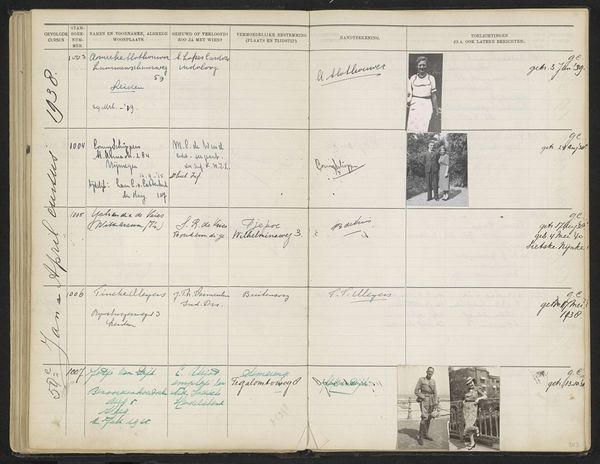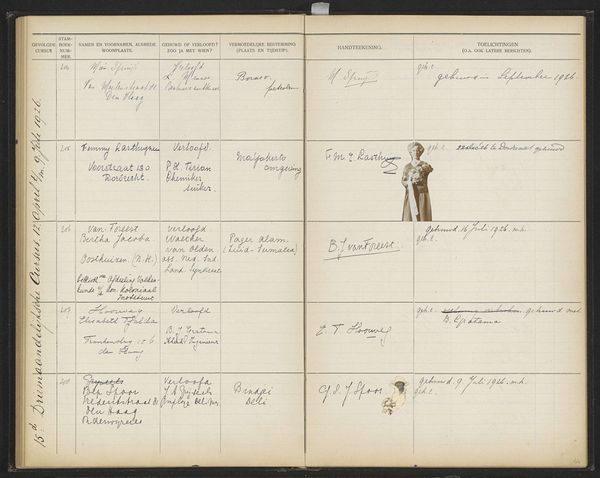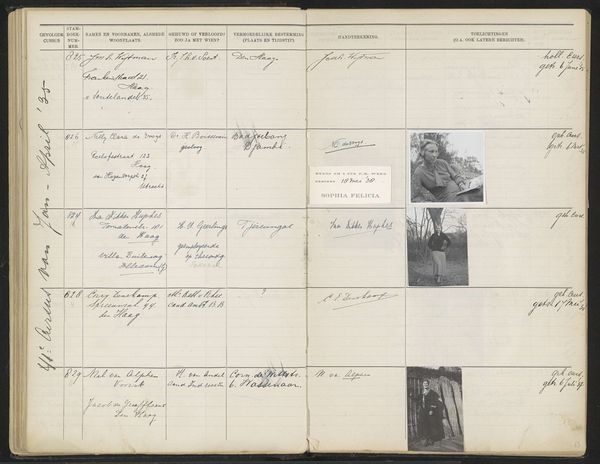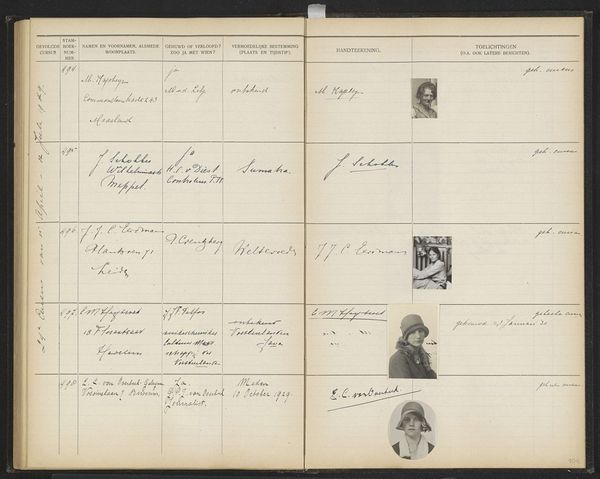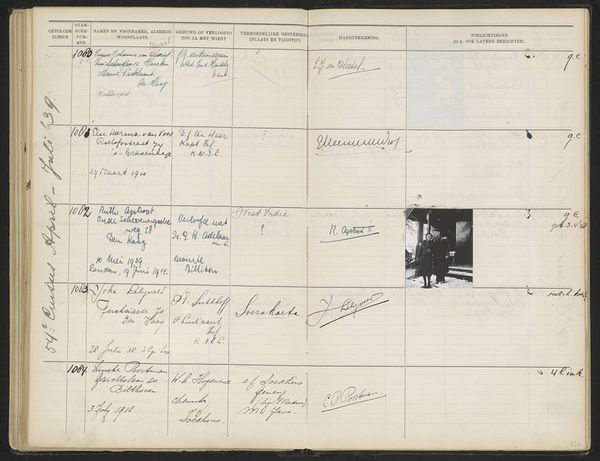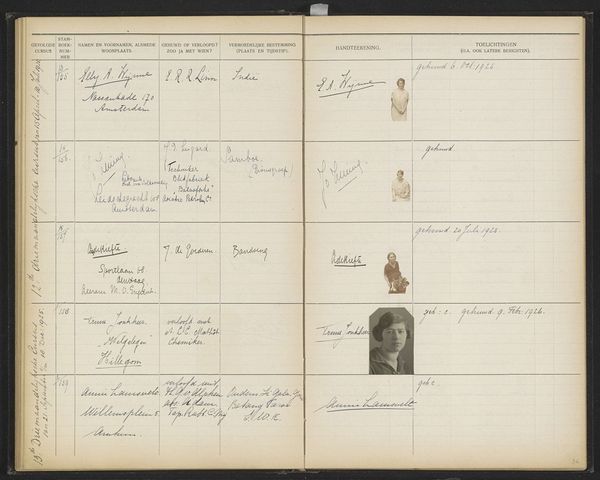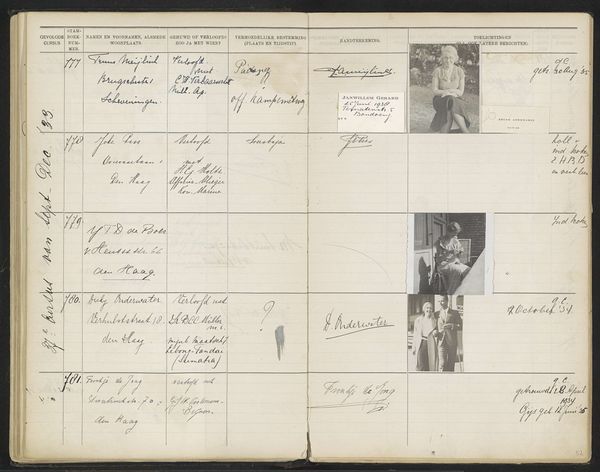
Blad 55 uit Stamboek van de leerlingen der Koloniale School voor Meisjes en Vrouwen te 's-Gravenhage deel I (1921-1929) Possibly 1927
0:00
0:00
drawing, paper, photography
#
portrait
#
drawing
#
aged paper
#
toned paper
#
sketch book
#
hand drawn type
#
paper
#
photography
#
personal sketchbook
#
hand-drawn typeface
#
fading type
#
sketchbook drawing
#
handwritten font
#
academic-art
#
sketchbook art
Dimensions: height 340 mm, width 440 mm
Copyright: Rijks Museum: Open Domain
Curator: This is a fascinating artifact titled "Blad 55 uit Stamboek van de leerlingen der Koloniale School voor Meisjes en Vrouwen te 's-Gravenhage deel I (1921-1929)," potentially from 1927. It’s essentially a page from a student registry at a Colonial school. Editor: My first thought? It's incredibly structured. The rigid columns and neat handwriting give the sense of meticulous order. The faded ink and toned paper also project a real sense of age and bureaucratic weight. Curator: Indeed. Each entry holds its own weight. Looking closer, the handwritten entries are almost like symbolic portals. There’s the student's name, birthplace, former occupation, and final evaluation, alongside their signature, and little photographic images or sketches of some kind. Each of these fragments represents a piece of their identity within this institution. Editor: Formally speaking, I’m struck by the interplay of text and image. The handwriting itself becomes almost illustrative; each signature unique and personal against the gridded framework. Look at the variety of marks people make—some flourish while others keep it tight. The fading creates a really nice visual dynamic, making different segments read very differently on the page. Curator: It speaks to the hope these young women must have felt. The school was likely seen as a pathway to social mobility and maybe even a means of expressing a particular kind of colonial feminine identity, which carries a whole complicated array of meanings. Editor: Right, that duality comes across just in how it’s made: regimented format struggling to hold varied human experiences and identities. We get a ghostly picture of how people expressed individuality against strict social control of their education. Even in small notations about life or the use of their photo is so evocative. Curator: And seeing these signatures and knowing they belonged to young women navigating colonial structures – it provides an opportunity to consider their ambitions, social position, and the overall impact on the society of their era. Editor: Absolutely. Looking at how the format controls but also invites personalization in fonts or handwriting, reveals institutional design but also suggests an important dialogue regarding personal expression inside that paradigm. Curator: Examining this "Blad 55" encourages empathy and reflection regarding how individual stories intersect within broader systems. Editor: For me, that interaction is visualized in the overall impact this artifact creates in its entirety. It provides information but is designed as such to create unique impact which, perhaps unintentionally, shows through these little deviations or personalized images found across its columns.
Comments
No comments
Be the first to comment and join the conversation on the ultimate creative platform.
